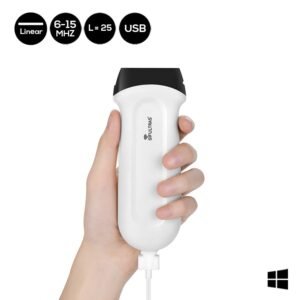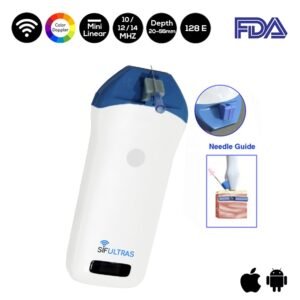Ultrasound Scanner-guided Salivary Glands assessment
Salivary glands make saliva and empty it into the mouth through openings called ducts. Saliva helps with swallowing and chewing. It can also help prevent infections from developing in the mouth or throat.
There are three pairs of major salivary glands:
- parotid glands on the insides of the cheeks
- submandibular glands at the floor of the mouth
- sublingual glands under the tongue
When there is a problem with the salivary glands or ducts, patients may have symptoms such as swelling, dry mouth, pain, fever, and foul-tasting drainage into the mouth.
The most common problems in the salivary gland occur when the ducts become blocked and saliva cannot drain.
What are the more common problems?
Many different problems can interfere with the function of the salivary glands or block the ducts so they can’t drain saliva such as:
* Sialolithiasis: is a condition in which tiny salivary stones form in the glands. The stones, called sialoliths, are made of calcium.
* Sialadenitis: is a painful infection. Staphylococcus, streptococcus, Haemophilus influenzae or anaerobic bacteria are usually the cause. The condition is common in elderly people who have stones, but infants can develop sialadenitis during the first few weeks of life.
* Cysts can develop after injuries, infections, stones or tumors. Sometimes babies are born with cysts in the parotid gland because of a problem with the early development of the ears.
* Tumors: Most salivary tumors are benign (noncancerous), but they can also be cancerous. Most salivary tumors grow in the parotid gland.
etc…
Ultrasonography (US) is useful for differential diagnosis of diseases of the salivary glands. It is a valuable and useful method for the diagnosis of diseases. Not only does it enable confirmation or exclusion of the presence of a mass, but in many cases, the nature of the underlying disease may also be suggested on the basis of US findings.
Which Ultrasound Scanner is the best to be used in the salivary glands assessments?
Using a high-frequency linear Ultrasound Scanner is the best for salivary glands examination. For this reason, our research and development team recommends either the USB Linear 6-15MHz Ultrasound Scanner SIFULTRAS-9.54 or the Color Doppler Mini Linear WiFi Ultrasound Scanner SIFULTRAS-3.51 to our Otorhinolaryngologist clients.
SIFULTRAS-9.54 is a Linear array Transducer that has multiple-frequency from 6 to 15MHz and a scanning mode of B, B+B, B+m with high-resolution imaging.
With its sealed head and its USB connector, a steady ultrasound signal makes the signal transmission faster, an amazing image quality that guides you to a clear decision, easy to carry wherever you go. What is more, SIFULTRAS-9.54 has a great feature which is simple printing and sharing images in which you can print the images in few seconds and share them with colleagues from your handheld ultrasound via email or by the network. In addition to its replaceable cables that have a variable length.
Moreover, the Mini Linear WiFi Ultrasound Scanner 10-12-14 MHz, SIFULTRAS-3.51 comes with a needle guide holder. Hence, it can be directly set to the guide pin frame; this might be needed for biopsy reason.
The latter allows the practitioner to visualize the needle in real-time as it enters the body and traverses to the desired location.
To sum up, an ultrasound scanner is indeed a great help during salivary glands examination and in the follow-up stage too. In which it detects masses and most importantly is that’s a safe and accurate technique.
References: salivary glands, salivary glands diseases and tumors, Salivary glands problems, US of the Major Salivary Glands: Anatomy and Spatial Relationships, Pathologic Conditions, and Pitfalls



